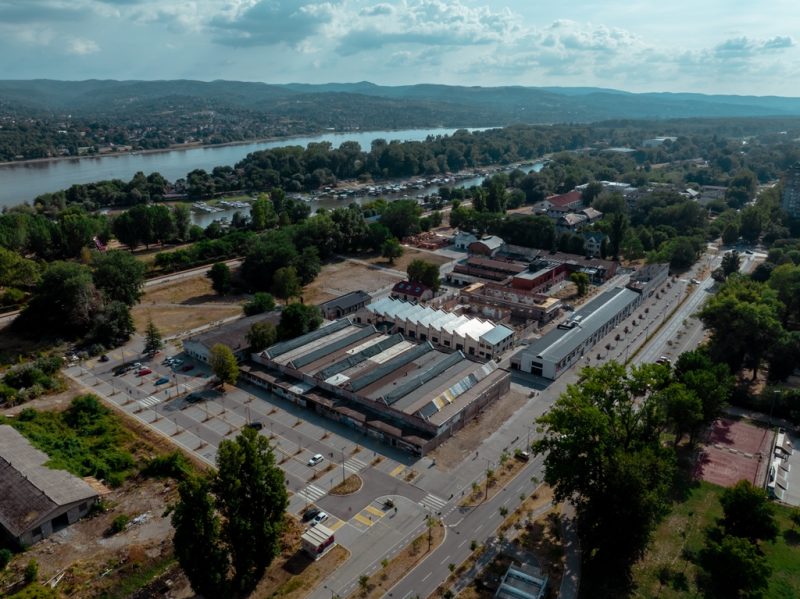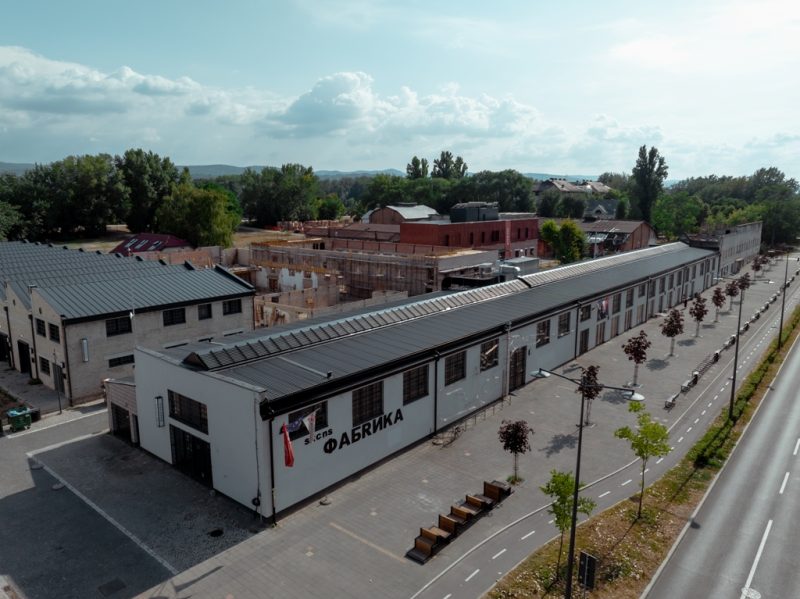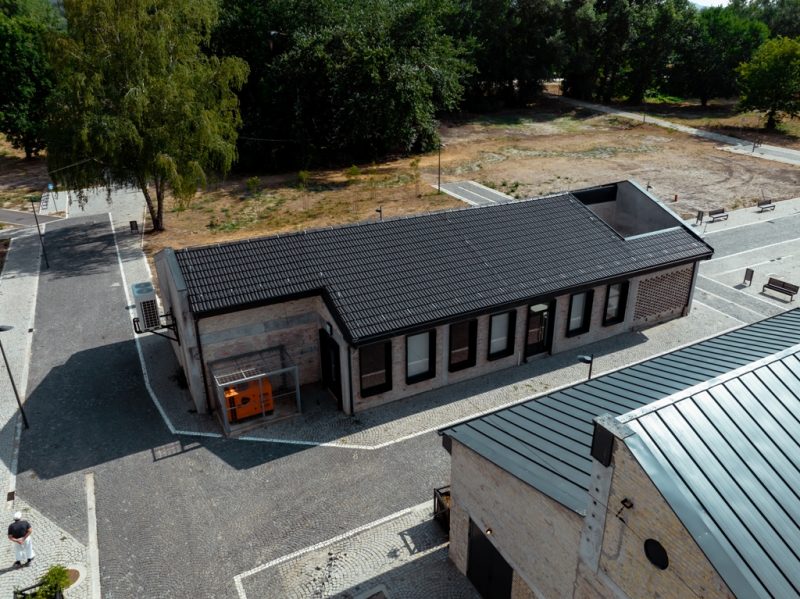According to research by independent evaluators, the residents of Novi Sad consider the renewal of the District art quarter as one of the most significant changes after receiving the title. Novi Sad has once again confirmed its reputation as an urban city, thus it stands out more and more through the development of an alternative art scene. This is precisely why the District will receive its first monograph.
Assistant at the Department of Architecture and Urbanism at the Faculty of Technical Sciences, Mária Szilágyi, who, along with Anica Draganić, is working on the monograph, believes that people are generally not familiar with the history of the District and Great Liman, and this is key to understanding the importance of the space, above all its intangible heritage.
– If people do not know the history of the area, they will not even understand why it is important to keep and restore some dilapidated buildings, mostly of little architectural value – says Mária Szilágyi. The monograph deals with the history of Great Liman, with an emphasis on the area of the District, the former Braća Kramer factory/Fabex/Petar Drapšin since 1923, from the appearance of the first factories and the construction of the road in Great Liman, until the transformation of the area into a District.

Mária Szilágyi points out that the focus of the monograph was the history of Great Liman from its creation to the end of the Second World War.
– We found the most material for that period mainly in the Historical Archive of the City of Novi Sad and in newspapers from that period. For the period from the Second World War to the relocation of the Petar Drapšin factory, we found the most material in the Archives of Vojvodina and also in the daily press. We did not research the private collections and photographs of Petar Drapšin’s former employees, but I believe that this venture would also be interesting since they probably looked at this space from different perspective. Since 1974, we have had few written sources, we mostly conducted interviews with people who were present in that area and actively participated in ensuring that the area survives as a whole and transforms into what it is today, a cultural district.
Renovation of the District after the World Models
The former rich industrial heritage of Novi Sad, consisting of factories for the production of tools on 11,000 square metres, thanks to the European Capital of Culture title, have been restored and transformed into places for the ‘production’ of culture. Novi Sad, following the example of numerous European cities, followed a positive example of renovation and repurposing of abandoned industrial spaces.

– Such an approach to industrial heritage can be found throughout Europe since the 1990s. If I had to cite an example, I would perhaps say the Zsolnay district in Pécs – the conversion of a former factory of bakery and ceramic products into a cultural district, into a creative industry. That undertaking was also done on the occasion of the city’s title as the European Capital of Culture – Mária Szilágyi points out.
The centre of contemporary creativity is a space not only for holding cultural events, but also a renovated home for numerous local artists and cultural organizations. The transformation of the formerly neglected Chinatown began a few years ago, and today, after the historic title of the European Capital of Culture, the District has remained as a permanent legacy and an urban neighbourhood that will continue to bring culture to all of us.
– Great Liman was an important industrial district of Novi Sad that developed from the 1920s, until the relocation of the Petar Drapšin factory in 1974. The transformation of the former factory into a cultural district was a slow process, but every period represents a significant step on the way to the District. Everything that happened in that space is today the cultural heritage of Novi Sad, where the preserved objects – i.e. the material heritage – represent a framework, within wich the intangible heritage of the District can be nurtured – says Mária Szilágyi. As she points out, looking back at the specificity of the history of the District, a big role was played by the company Manual (Manual Museum of Forgotten Arts), which already had the vision of Chinatown in the mid-2000s, as a place where the cultural industry develops. Therefore, they took the practical steps towards the goal.
Advantages of the District
– Among the advantages of the District, I would mention the history and location, the proximity to the Danube and the proximity to the former railway station. Those factors were key to the creation and development of that area, and thanks to them, the new industrial zone of Novi Sad was formed there after the First World War – said Mária Szilágyi.
District – A Centre of New Creative Industries
Maria believes that the District can indeed become a new centre of creative industries in Novi Sad, but that it is important that we treat this area as a whole, that it breathes and functions as a whole.
– We must consider the District as a whole, with all the accompanying contents required by a cultural district. If we divide the space into small units, where everyone works and presents their content without interacting with the environment and with other participants, then we will lose the meaning of the District – says Mária Szilágyi, who supports the transformation of industrial heritage and old factories into new spaces dedicated to culture and art. – In case that restoration of the original function is not possible, the right approach is to turn industrial spaces into cultural industry spaces, to create culture ‘products’ instead of specific products. Of course, it is very important that all of this is sustainable, self-sustaining, which inevitably requires other accompanying contents, apart from cultural ones.
Source: Dnevnik
Photo: Filip Petronijević








